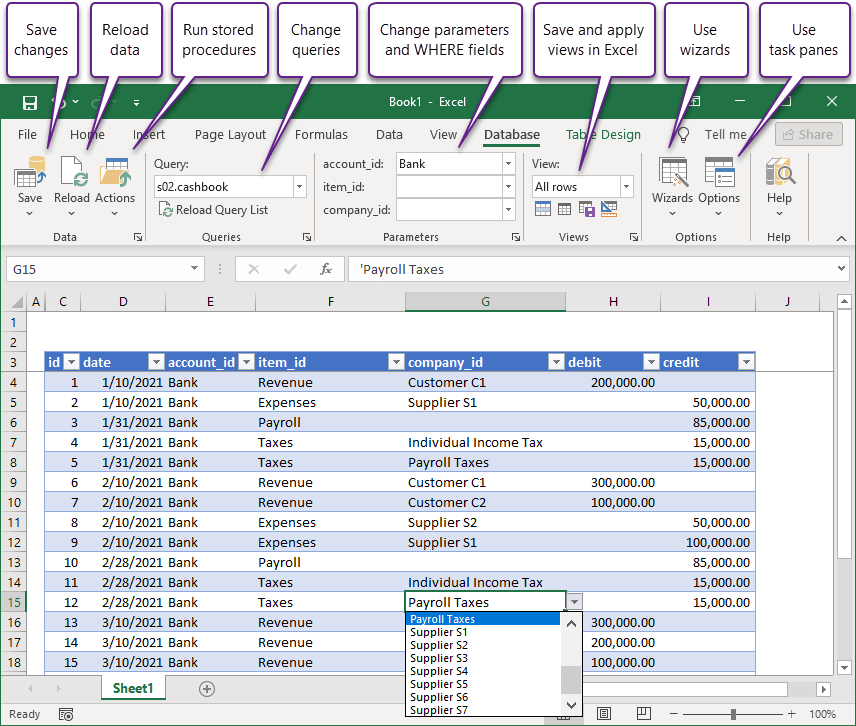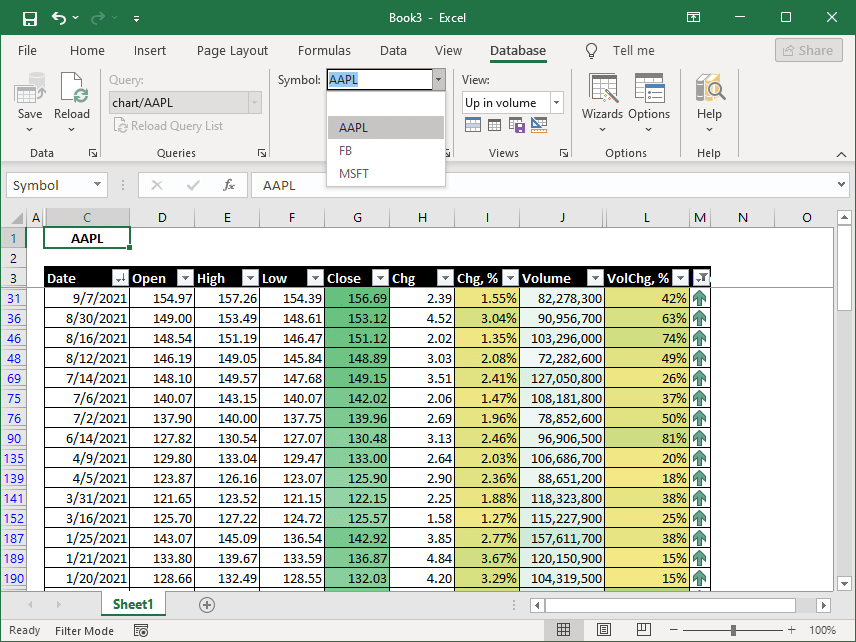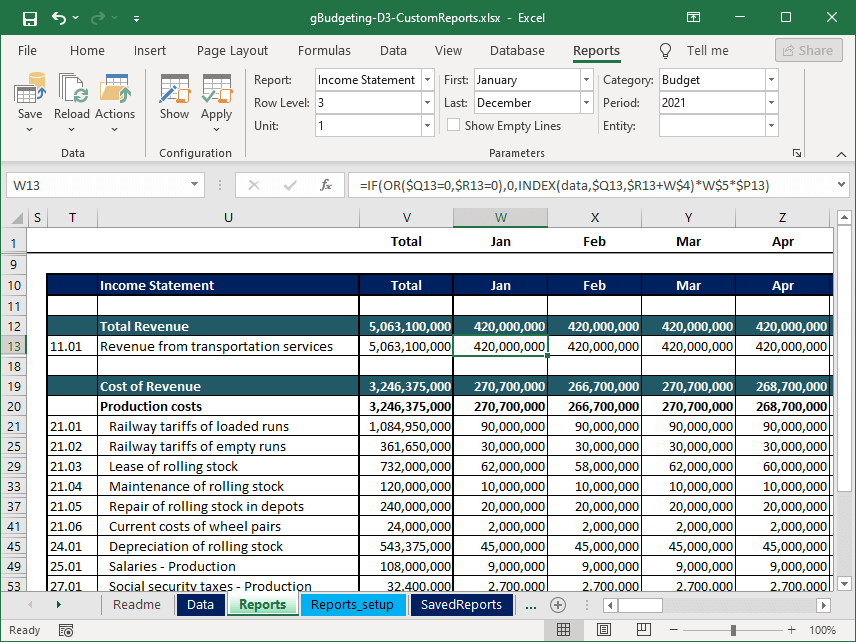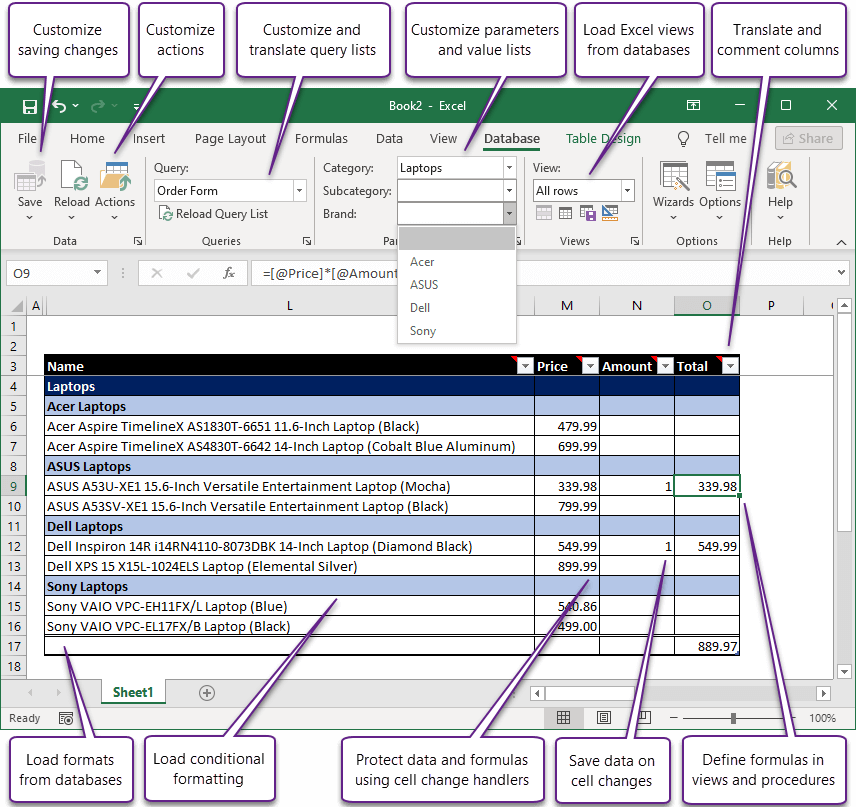Getting Started with SaveToDB Add-in
The SaveToDB add-in for Microsoft Excel has five major use cases:
- Database Tool
- Web Data Tool
- Reporting Tool
- Data Layer Library for VBA projects
- Client Application Platform
Most add-in features are available in a free edition, except for saving changes to server databases and web services.
SaveToDB Add-in as Database Tool
The add-in allows connecting to database tables, views, and stored procedures.
You can modify the data and save it to the database, in most cases, without any coding.
Below is a sample of the Database tab with a connected table:

First of all, note that the add-in creates value lists for columns with foreign keys. You work with names but not IDs.
The add-in also allows using ribbon fields to filter values.
Take a look at table views. You can create any number of views directly in Excel.
You can copy SQL commands to save data and execute them in another tool for a free edition.
And these are just some of the add-in features.
SaveToDB Add-in as Web Data Tool
The add-in allows working with REST API data services, including OData, similar to databases. It supports saving data, value lists, and other features.
The add-in also allows getting data from web pages and web services in HTML, XML, JSON, CSV, and plain text formats.
You can define query parameters on the ribbon and use all the Excel features to work with such data.
Below is a sample of getting historical stock prices:

You can save and apply different table views to find what you need quickly.
You can also save the loaded data to the database and even use VBA macros.
SaveToDB Add-in as Reporting Tool
Microsoft Excel is an excellent tool for working with reports based on various data sources.
The SaveToDB add-in, starting with version 9, offers amazing options for working with interactive reports.
The following example shows the custom Reports tab:

You can configure ribbon parameters to update external data and change report views.
Moreover, you can save consolidated reports data to databases.
You can also configure various actions for your reports, including exporting reports to new Excel workbooks and PDF files, running stored procedures from the action menu or Excel context menu to obtain detailed data.
Except for saving to databases and web data services, all reporting capabilities are available in a free edition.
SaveToDB Add-in as Data Layer Library for VBA Projects
The SaveToDB add-in contains about one hundred methods available from VBA.
You can automate almost all add-in actions that can be done manually.
Here is an example of saving and updating data:
Dim com As COMAddIn
Dim addIn As Object
Set com = Application.COMAddIns("SaveToDB")
Set addIn = com.Object
If Not addIn.Save() Then
MsgBox addIn.LastResultMessage
End If
If Not addIn.Load() Then
MsgBox addIn.LastResultMessage
End If
The code executes the operations for the active ListObject object connected to a database or web service.
The data source is not important as the data provider also, OLE DB, ODBC, or .NET Framework.
Due to this feature, the SaveToDB add-in is an excellent data access library.
See Developer Guide for details.
SaveToDB Add-in as Client Application Platform
Microsoft Excel contains a lot of powerful features and is familiar to users.
The SaveToDB add-in allows using Excel as a complete client application for databases and web data services.
Developers configure the applications on the server-side while the add-in loads configuration in run-time.
Developers can easily add and configure features while users update application settings in Excel.
Below are several ideas for using the add-in features:

Next Steps
You can start learning about SaveToDB on the following topics:
- Database Connection Wizard
- Web Data Connection Wizard
- Database Tab
- Reports Tab
- Task Panes
- Excel Enhancements
Most of these features do not require programming and are available in a free edition.
If you are a developer, refer to the Developer Guide.
You will find many examples of using the add-in in the Online Examples of the Wizards menu.